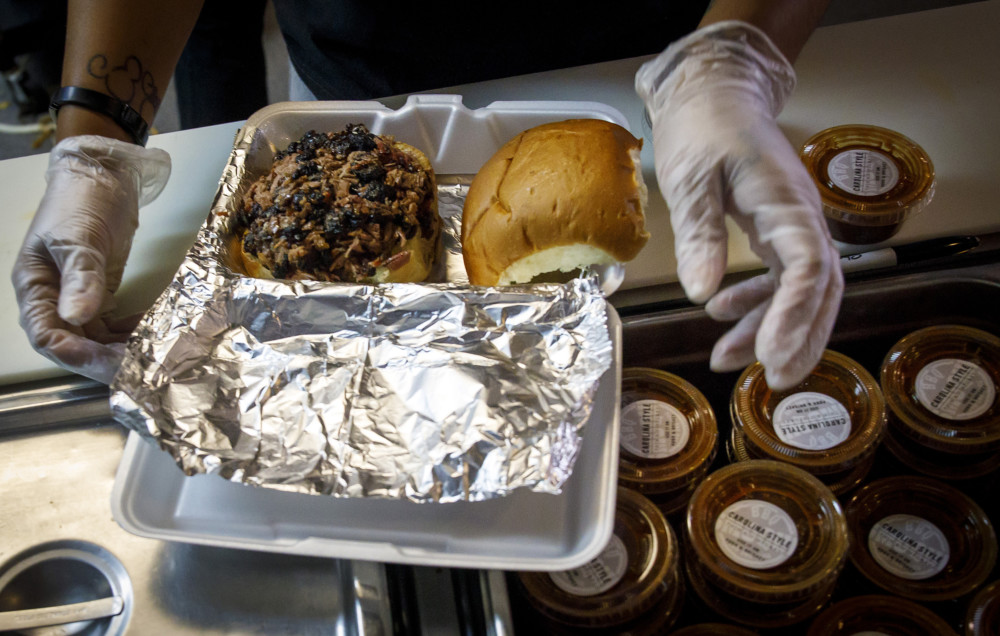By Samantha Bomkamp
Chicago Tribune
WWR Article Summary (tl;dr) Delivery now accounts for 1.7 billion restaurant transactions per year. In fact one-fourth of all U.S. consumers said they had ordered a meal via delivery in the previous three months.
CHICAGO
Delivery, it seems, is a must for restaurants these days.
It allows restaurants to reach customers who don’t want to eat out, but also don’t want to cook. And it bolsters restaurants’ revenue by getting their food to a customer’s door, with the help of a third-party delivery service, without adding staff or increasing costs. Eateries ranging from McDonald’s to smaller independents are joining the trend.
But some restaurants are staying on the sidelines when it comes to delivery.
Texas Roadhouse, one of the only casual dining chains that doesn’t do delivery, explained its position in a conference call earlier this month after reporting quarterly financial results.
“We encourage all of our competitors to do as much delivery as they can so they can deliver lukewarm food to their people,” CEO Kent Taylor said. “We will stick to our guns on this.”
The Louisville, Ky.-based chain says it won’t do delivery for a number of reasons: No. 1 being food quality or temperature concerns. Texas Roadhouse also worries about asking its restaurant staff to make more orders at peak dinner times, when customers already are packed into the dining room.
“It’s easy for a restaurant company who is underutilizing their kitchens and who has had a lot of negative traffic for the last 5 to 10 years,” Texas Roadhouse Chief Financial Officer Scott Colosi said of delivery. “We’re just in a different position.”
Delivery now accounts for 1.7 billion restaurant transactions per year, according to The NPD Group, a research and consulting firm. In a study earlier this year, NPD reported that one-fourth of all U.S. consumers said they had ordered a meal via delivery in the previous three months. Delivery also tends to be popular with younger consumers, who eat out more often and represent a bigger slice of restaurant customers.
McDonald’s is perhaps one of the most unexpected examples of delivery’s growing importance to restaurant chains.
The world’s largest burger chain started delivering time-sensitive food like burgers and fries through UberEats earlier this year, and the service is now at about one-quarter of U.S. restaurants.
Because the food isn’t prepared until an UberEats driver arrives at the restaurant, McDonald’s says that the food doesn’t have a chance to get cold before it’s delivered to a customer’s door.
“If delivery fits a food-service operator’s business model and it’s operationally feasible, they definitely need to add it on as an option in order to stay competitive,” said Warren Solochek, president of NPD’s food-service practice.
Other restaurants have forged ahead as well, but with lingering concerns.
Smoque BBQ, a restaurant in Chicago, was nudged by diners to start delivery earlier this year through Caviar, a meal delivery service.
“We were getting a lot of pressure from customers,” co-owner Barry Sorkin recalled. “This is how people get food now, whether we like it or not.”
Sorkin said some of his fears were eased by Caviar, which limits delivery zones and uses thermal bags to keep food as hot as possible.
“We were still uncomfortable, but they take (delivery) seriously, and there’s a degree of professionalism,” he said.
Sorkin said he relented in part because about 40 percent of the barbeque joint’s business is already takeout.
“People order french fries and drive 30 minutes with them, which deeply offends me, but they’re going to do it,” Sorkin said. “Nothing is the same after it has traveled.”














































































































































































































































































































































































